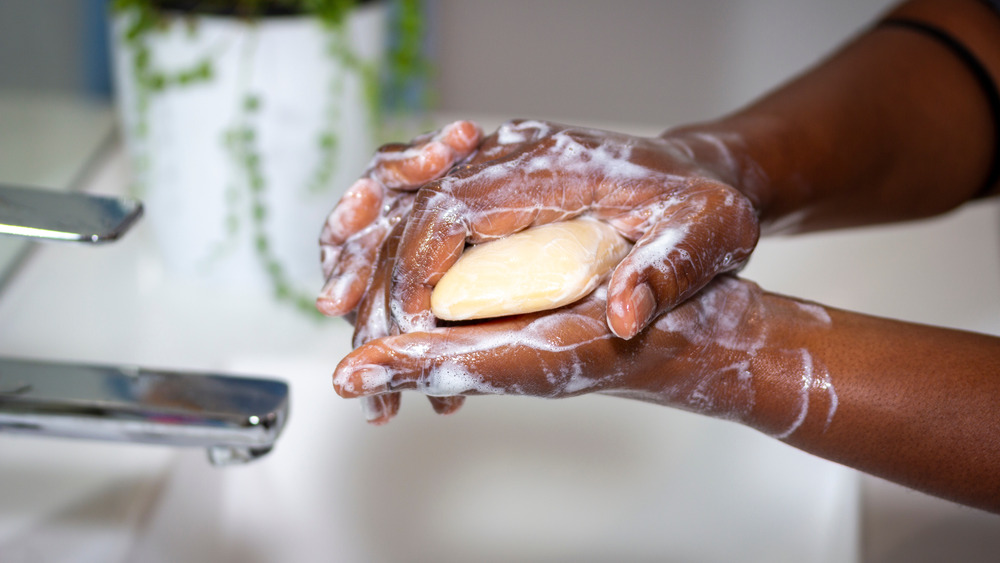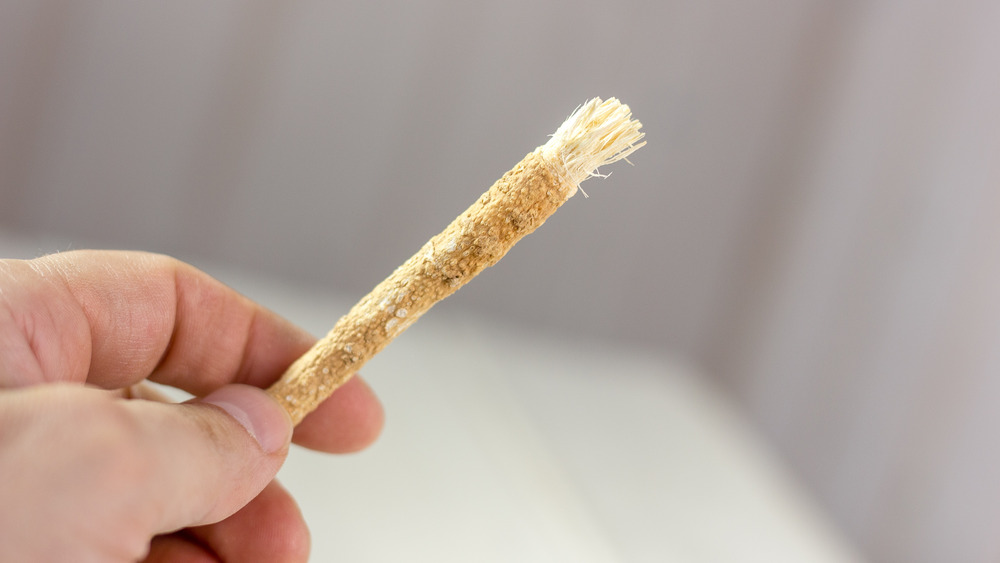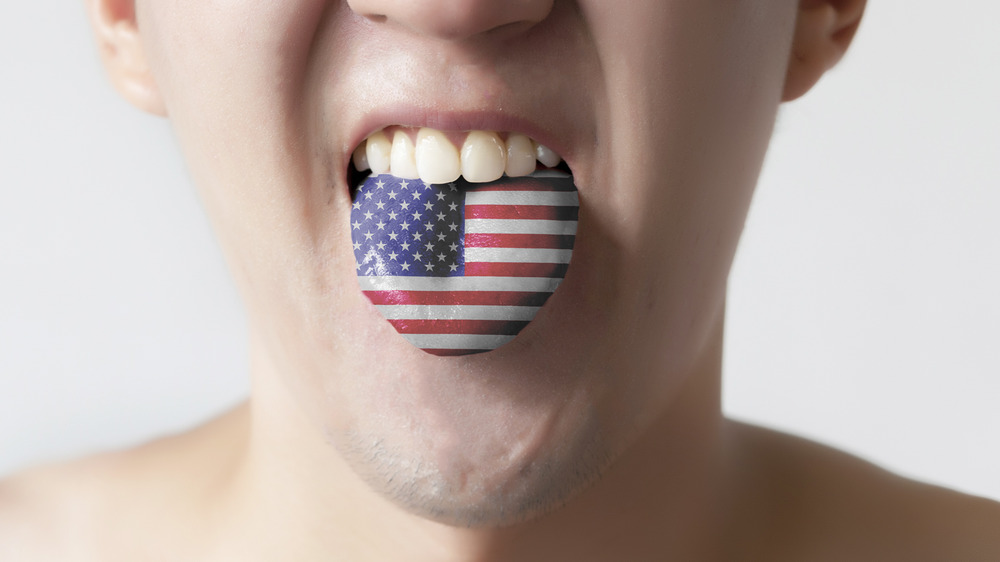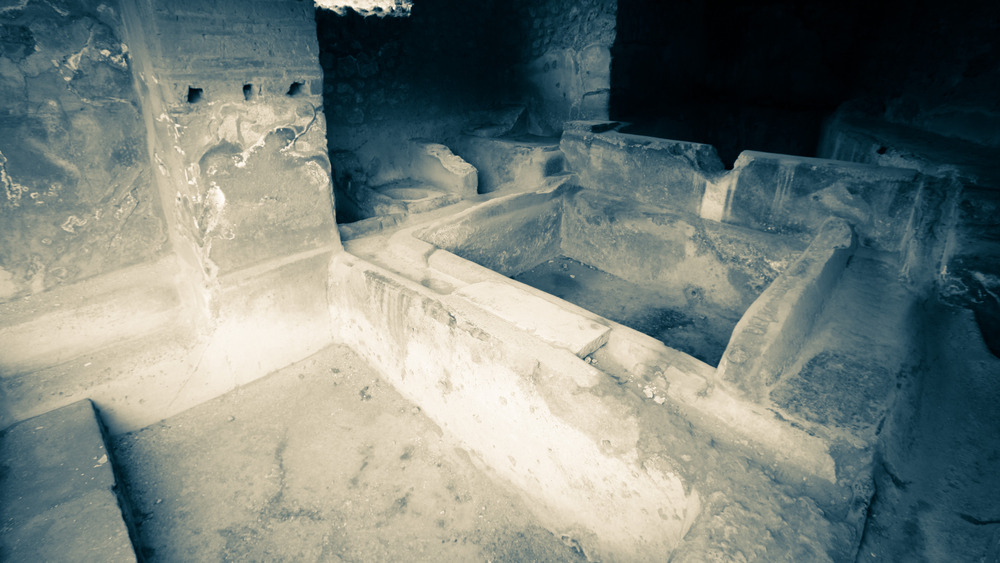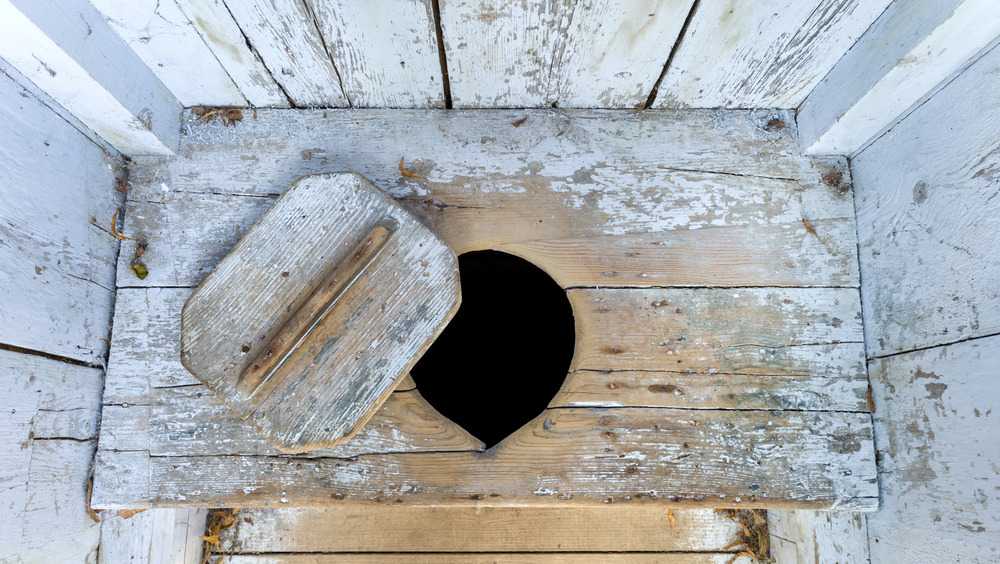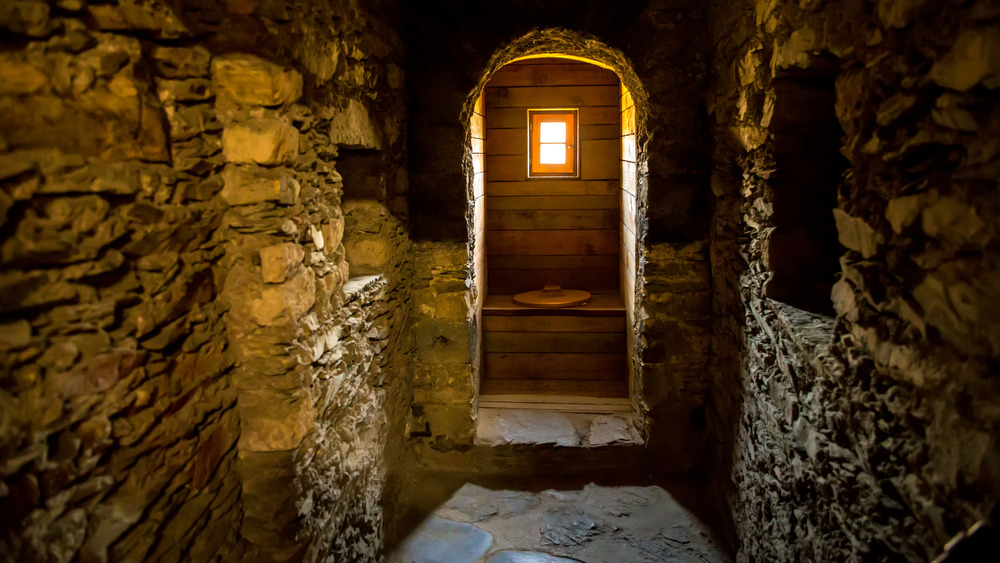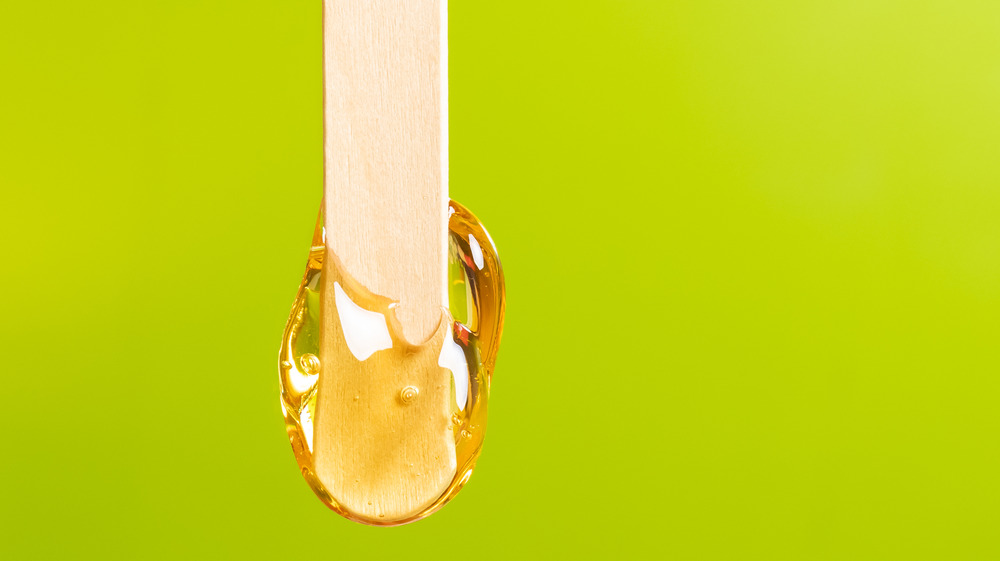What Hygiene Has Looked Like Throughout History
Compared to past centuries, it's easy to argue that we live in a golden age of near-obsessive cleanliness. The worldwide market for cleaning products exceeds $40 billion. And because we have a scientific understanding of how germs cause disease, we're much better positioned to manage hygiene issues than our less knowledgeable ancestors.
But are we as smart about keeping clean as we think we are? Before you get too smug about modern hygiene habits, consider a poll which discovered that four out of ten Americans don't wash their hands after using a restroom. Or that overuse of antimicrobial cleaning products is contributing to the rise of resistant bacteria.
True, some of the hygiene practices of previous eras were wrong-headed, objectively gross, or even dangerous. But in other cases, practices that would squick us out made sense given the knowledge and resources of the day. Read on to see who in history gets a gold star for sanitation, and who's a wash-out.
Surgeons didn't used to wash their hands before surgery
Washing your hands before you, oh, put them inside another person's body may seem like common sense. But the first hard evidence for hand-washing only dates back to the 19th century, said Miryam Wahrman, author of The Hand Book: Surviving in a Germ-Filled World, in an interview with The Guardian. In 1848, before germs were understood, it was routine for physicians to go from dissecting cadavers to delivering babies...without so much as looking at a bar of soap in between.
Wahrman explained that a doctor named Ignaz Semmelweis noticed the high mortality rates among new mothers at a Vienna hospital — especially compared to a clinic run by midwives. When a doctor was cut by a scalpel and died of what we would call an infection, Semmelweis suspected some lethal agent was being transmitted via doctors' unwashed hands. He tested his theory by instituting hand hygiene, which lowered the mortality rate in the maternity ward from 18% to 1%. Unfortunately, his discovery didn't catch on, because the medical establishment had no frame of reference to explain it. That would take another forty years, with the rise of germ theory.
People have been purifying their drinking water since 4,000 BCE
The next time you grab a bottle of water from the fridge or enjoy clean water that's been treated by your municipality, consider it the result of a millennia-long effort. Humans have been trying to improve the quality of the water they drink since at least 4,000 BCE, according to the U.S. Environmental Protection Agency.
Methods used by ancient civilizations to purify their water included filtering it through charcoal, boiling it, exposing it to sunlight, and straining it. The Egyptians of 1500 BCE used a chemical called alum to remove particles from water (via the EPA). Other techniques included dipping hot copper or iron into it, filtering it through stone or seeds, and keeping it in cisterns so particles would settle to the bottom, according to The Quest for Pure Water written by M.N. Baker.
Premodern water treatment mostly focused on improving taste, odor, and turbidity (cloudiness). But since particles in water can harbor pathogens, this was also a matter of hygiene. When the germ theory of disease took hold in the 19th century, it became clear that clean drinking water could prevent diseases like cholera, typhoid, and dysentery.
Before toilet paper, people used all sorts of things
You might say the history of butt-wiping is a testament to human ingenuity, even if it's not as glamorous as the discovery of fire or the invention of movable type.
Natural materials like leaves, moss, grass, corn cobs, animal fur, sticks, and even seashells — perhaps with a rinse of water or snow — worked fine for many populations throughout history (via the British Medical Journal). The ancient Greeks and Romans used a tool called a tersorium, basically a sponge on a stick. Another Greco-Roman option was to use pessoi, small pieces of broken ceramic that were rounded and given smooth edges (thank goodness). Sometimes they were inscribed the name of an enemy (sick burn!).
Because cloth was made by hand in preindustrial cultures, it was too expensive an option for bathroom use. But toilet paper has been around longer than you may think: China had it as early as 200 BCE. Modern, commercially available TP didn't appear in the western world until 1857 (via History).
People used to think bad air caused disease
Many hygiene practices from previous centuries seem misguided to us because people from previous eras didn't have a scientific understanding of how disease is transmitted. For example, in 16th century Europe, when the plague was running rampant, bathing was believed to be a cause. Being submerged in water was thought to open one's pores and let disease into the body. This distrust of bathing lasted into the 20th century (via CNN).
Until scientists discovered the existence of disease-causing microorganisms, the prevailing theory was that disease was carried by "miasmas," poisonous vapors emitted by decaying organic matter, according to a 2012 academic paper on the subject. This squared with the observation that epidemics tended to break out during summer months, "where the air in the cities was humid and filled with the odors of garbage, decomposing animals and human waste." Although some nay-sayers noted that certain illnesses were transmitted by direct contact with the ill, the miasma theory remained dominant well into the 1800s.
The miasma theory could lead to good sanitary policies, like removing waste and sewage. But it also encouraged unhelpful practices, like wearing masks to prevent plague, a disease transmitted by flea bite (via Science Museum).
People have been brushing their teeth for longer than you think
Cavities and tooth decay are the most common chronic human diseases, according to a 2009 article published in Brazilian Oral Research, so it should come as no surprise that people have been seeking ways to keep their teeth clean for as long as recorded history. Sumerian texts from 5000 BCE discuss dental cavities and ascribe them to "tooth worms," a theory that thankfully didn't pan out. The first dentist in history is generally considered to be an Egyptian scribe named Hesy-Re, who lived in 2600 BCE and was known as "the greatest of those who deal with teeth." (From the American Dental Association.)
A common (albeit crude) teeth-cleaning method in the ancient world was to chew on twigs or sticks, with animal bones, feathers, or even porcupine quills as toothpicks. Fraying the edges of a stick created bristles that made teeth-cleaning more effective. In ancient Greece, toothpicks were so ubiquitous that the Greeks were nicknamed "toothpick chewers." The toothbrush as we know it—a handle with bristles—seems to have first appeared in China in the 15th century (a 17th-century Chinese encyclopedia states that it was invented in 1498; from the ADA).
America was a nation of public spitters for most of its existence
Okay, public spitting isn't unheard of these days; we've all witnessed some guy hock a big gob of saliva onto the sidewalk (or had to walk around the aftermath). But generally, it's not a behavior that's tolerated in most public settings. This wasn't true for most of American history, however.
American colonists brought with them a European comfort with spitting that dated back to the middle ages. Per Tenement Museum, that attitude was amped up big time when the colonials discovered chewing tobacco, which quickly became a ubiquitous habit. By 1842, spitting was so ingrained into American culture that visiting author Charles Dickens complained about the "odious practices of chewing and expectorating" (via Cambridge University Press).
As the nation became industrialized, the cleanliness of public spitting in crowded cities was called into question. But anti-spitting legislation didn't take hold until spitting was linked to the spread of tuberculosis, a lung infection that was the leading cause of death in late 19th and early 20th-century America. (From the Journal of the History of Medicine and Allied Sciences.)
Bad breath was considered grounds for divorce
According to the Talmud, the written collection of Jewish law and related commentaries dating to the second century CE, bad breath is a "serious disability" with regard to a marriage contract. This meant that husbands could annul their marriage contract if spousal halitosis wasn't disclosed before the wedding (other such loopholes include "a thick voice" and "non-obvious lesions of the head and neck"). Furthermore, while women were not generally allowed to unilaterally divorce their husbands during the time the Talmud was written, a husband with bad breath was considered an exception. (Other exceptions: he's afflicted with boils; he collects dog dung for a living.)
The Talmud also states that priests who have bad breath are prohibited from performing holy rites in the Temple (unless they take steps to fix the problem). On the positive side, the Talmud offers several traditional remedies for bad breath, such as chewing pine tree resin, which modern research has shown to have antibacterial properties. Other suggestions include rinsing the mouth with water, olive oil, and a salt mix, and freshening the breath with aromatic spices like ginger and cinnamon. (From the Israeli Medical Association Journal).
Vikings were surprisingly hygienic
When you hear the word "Viking," what do you picture? Sea-raiding Norsemen out to pillage and plunder? Or well-scrubbed chaps with fancy hairstyles? Why not both?
According to an article published in Internet Archaeology, in excavations of Viking graves, combs belonging to both men and women are among the most common objects, along with tweezers and ear picks. Their decoration and ornamentation, and the fact that some were kept in a separate case or purse, suggests that these were prized possessions. Writings and art from the time show that hair care and hairstyles — including beard grooming — were extremely important for Viking men. In fact, during the centuries of the Viking age, men's hairdos seem to have varied considerably, while women mostly stuck with a coiled and knotted ponytail.
Writings of the day reveal that Viking culture also encouraged frequent changes of clothing and weekly bathing, reports the History of York. Meanwhile, Western Europe avoided baths for fear they caused the plague. According to at least one account, both men and women wore makeup to appear younger and more attractive! (via CNN).
Ancient Romans washed their clothing in urine
Cleanliness was a big deal to the ancient Romans, for whom the term "well-washed" was synonymous with elegant or distinguished. Citizens of a Roman town or city brought soiled garments to a fullonica, which functioned as a laundry or dry-cleaner. But the Roman process for cleaning textiles used different techniques than your local Speed-O-Mat, like stomping on the clothing while it soaked, treating it with a special kind of clay, and washing it in water mixed with human or animal urine.
One advantage to using human urine as your detergent: It's cheap and easily acquired (though the emperor Vespasian decided to tax it). Roman fullers — the launderers of their day — collected urine from pots left in the street for public use, and even had urine piped in from public bathhouses. Skeevy as it seems, the concept is chemically sound. Urine breaks down into ammonia, an effective dirt and grease buster. It also prevents natural dyes from leaching out of cloth. Romans used urine for all sorts of things, including preparing dyes, animal hides, and metals; fertilizing fruit trees; and treating everything from snake-bite to dandruff. (via a paper published in the Journal of Roman Archaeology)
Collecting feces used to be big business
It was the dirtiest of dirty jobs, but somebody had to do it. Before the advent of sewers, human waste accumulated where it was dropped, and eventually even the biggest cesspool, privy, or latrine would need to be emptied.
As cities grew in the 19th century, so did the challenge of handling unprecedented amounts of poop. Manhattan in 1844, for example, produced an estimated 800,000 cubic feet of excrement in a year, "enough poop to fill the trunks of about 53,000 mid-sized cars", according to Atlas Obsucra. "Hundreds of men were employed in cities — mostly African-Americans and immigrants" to empty out the waste — euphemistically called "night soil"—and haul it away after dark in horse-drawn carts. Often the solid waste was dumped in the nearest river, or even into the street.
Pumping machines and airtight tanks were developed to help control smell and leakage, but this system was untenable from a public health standpoint, with contaminated water leading to cholera outbreaks. By the early 20th century, municipal sewer systems were in place in most cities, and the night soil business dried up for good.
Henry the VIII's parties were so disgusting he had to change castles
Life in an old-timey castle wasn't the fairytale existence it's cracked up to be. England's King Henry the VIII, for example, was frequently on the road (along with his 700-person court) visiting his 60 residences, plus assorted other palaces and aristocratic abodes, mainly to keep ahead of the mounds of human waste and garbage generated by royal banquets and parties.
European royal courts in the Middle Ages, Renaissance, and Regency eras tended to be dirtier than the private homes of the time. "Feces and urine were everywhere," Eleanor Herman, author of The Royal Art of Poison, told History. She noted that the aristocrats sometimes didn't bother with chamber pots, doing their business in any convenient spot. King Henry had to issue bizarre hygiene edicts: No urinating on garden walls; no leaving dirty dishes in the hallways or on the king's bed; no rubbing your gross hands on the tapestries; no cooking while naked or wearing "garments of ... vileness." Even Louis XIV's famed Versailles court reeked with the stench of hundreds of unwashed garments in an unventilated room.
People in castles kept their clothes in the bathroom
Medieval castles were notoriously unhygienic, but their design did include restrooms — or at least a medieval equivalent. Often these were small rooms that projected from a castle or monastery wall, with a toilet that was little more than a bench with a hole in it, dropping waste directly into the castle moat, a river, or a cesspool. Sometimes an enclosing shaft helped contain the drop, and if it ran close enough to the ground, it could become a point of entry for invaders during a siege (tough break for the soldier who gets that assignment).
Inside, the chamber might have a small window for ventilation and may have been whitewashed to maximize light. Hay, grass, or moss was your toilet paper, and aromatic herbs were scattered around to help contain the smell, but there's no doubt these rooms stank. So the castle people ingeniously used this to their advantage by keeping garments in or near the chamber. Why? Because the "pungent ammonia fumes helped to kill mites" or other vermin infesting the fabric (via World History Encyclopedia).
Ancient Egyptians dressed wounds with honey
While we have lots of knowledge that the ancient world lacked, in some ways our forebears were cleverer than us, able to figure out best practices without having a scientific framework to help them do it. For example, the ancient Egyptians were known to treat wounds by applying honey, with a mix of grease and vegetable fibers, as reported in an academic review in the Journal of the American College of Clinical Wound Specialists. The fibers probably helped wounds to drain, while the honey and grease acted as a barrier keeping out infectious bacteria. Honey itself has antibacterial and antiseptic properties; some types have been found to kill off harmful microbes like Staphylococcus in lab studies (via CNN).
"One of the oldest [known] medical manuscripts," dating to 2200 BCE, refers to "three healing gestures" for wound care: washing the wound, making a plaster, and applying bandages, according to the review. These basic principles are still relevant today; a plaster refers to a wound dressing — like the Egyptian honey — that protects the injured area and keeps bandages from sticking to it. Most dressings used in ancient civilizations included some form of oil, which inhibits bacterial growth.
Native Americans were grossed out by the European colonists
The first Europeans arriving in North America described the natives they met as "beautiful of stature and build." The natives were less impressed. They considered the Europeans unintelligent, weak, ugly, and, perhaps worst of all, they were a bunch of stinky slobs. Natives were disgusted by the colonists' use of handkerchiefs, for example (Via Smithsonian Magazine.)
Unlike bathing-averse Europeans, most Native Americans bathed regularly in rivers and streams. They attended to dental hygiene by cleaning their teeth with wooden chewing sticks and freshening their breath with mint. To Europeans, personal hygiene meant washing their hands and face and changing the linen they wore under their clothes, which they believed drew dirt and impurities from their bodies.
The natives brushed their teeth and wouldn't be caught dead carrying around a handkerchief filled with mucus. The famous English-speaking native known as Tisquantum (a.k.a. "Squanto") tried to convince the pilgrims to wash themselves, to no avail. Tragically, with their poor hygiene, the colonists also brought diseases that devastated the native populations. (Via History).

